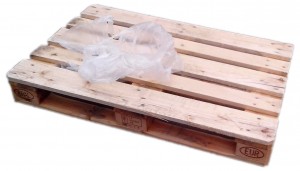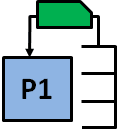 In industry, I often find the view that machines must run. The reasons given for this are that the machines were expensive investments, labor cost will accumulate, and the customer is waiting for products, hence the line must run. There is definitely some truth in this. However, the conclusion that the line must not stop is completely wrong. On the contrary, for the line (or the process in general) to run well, you MUST stop the line in certain circumstances. In this and the next post I would like to look in more detail at when you, rather than pressing forward with production (or rather, your operators), should stop the line. Let me explain.
In industry, I often find the view that machines must run. The reasons given for this are that the machines were expensive investments, labor cost will accumulate, and the customer is waiting for products, hence the line must run. There is definitely some truth in this. However, the conclusion that the line must not stop is completely wrong. On the contrary, for the line (or the process in general) to run well, you MUST stop the line in certain circumstances. In this and the next post I would like to look in more detail at when you, rather than pressing forward with production (or rather, your operators), should stop the line. Let me explain.
Pull
Real vs. Planned Data in Pull Systems
 Pull systems like kanban and reorder point are a cornerstone of inventory management and fluctuation reduction in lean manufacturing. The production is managed based on ACTUAL consumption. Theoretically, it is also possible to include expected but not yet actual consumption. In this post, I will explain to you the concept behind it and why I think it is a bad idea…
Pull systems like kanban and reorder point are a cornerstone of inventory management and fluctuation reduction in lean manufacturing. The production is managed based on ACTUAL consumption. Theoretically, it is also possible to include expected but not yet actual consumption. In this post, I will explain to you the concept behind it and why I think it is a bad idea…
Pull: A Way Forward for Supply Chains – Guest Post by John Shook
 The release of Christoph Roser’s new book All About Pull Production inspires John Shook to discuss the origins and true meaning of “pull” and why it is incorrect to blame JIT for the shortcomings of global supply chains.
The release of Christoph Roser’s new book All About Pull Production inspires John Shook to discuss the origins and true meaning of “pull” and why it is incorrect to blame JIT for the shortcomings of global supply chains.
Guest post by John Shook based on his foreword in my book, and also a Cross-Post with Planet Lean. Many thanks, John!
What Is a Good Minimum for the Supermarket?

A minimum level in a supermarket gives you a warning that a stock out is imminent. Hopefully it also gives you enough time to prevent such a stock out, even though this may result in firefighting. In my last post I talked on how to use a minimum level. This post will look at how to determine a good minimum level.
Toyota’s Six Rules for Kanban
 The kanban system is the most famous way to establish a pull system. As part of their guidelines for kanban, Toyota has established Six Rules for Kanban. They can be found, for example, in the 1973 Toyota Production System Handbook. This blog post describes these six rules, based on the Toyota handbook. While these rules are all true, they are in themselves not sufficient to establish a kanban pull production. Nevertheless, this post will show you these six rules.
The kanban system is the most famous way to establish a pull system. As part of their guidelines for kanban, Toyota has established Six Rules for Kanban. They can be found, for example, in the 1973 Toyota Production System Handbook. This blog post describes these six rules, based on the Toyota handbook. While these rules are all true, they are in themselves not sufficient to establish a kanban pull production. Nevertheless, this post will show you these six rules.
When NOT to Pull!
How to Make CONWIP Loops

CONWIP (Constant Work in Progress) is an easy way to establish pull production for custom-made products. Traditionally there is only one large loop for the product. However, there may also be situations where it is sensible to split a longer CONWIP loop into smaller segments. Let’s have a look at the details.
Should You Use Physical or Digital Kanban Cards?
 Kanban and similar pull systems like CONWIP or POLCA are basic parts of lean production. They limit the maximum number of parts by attaching a sort of token (i.e., the kanban card) to the part, and return to the beginning when the part leaves the system.
Kanban and similar pull systems like CONWIP or POLCA are basic parts of lean production. They limit the maximum number of parts by attaching a sort of token (i.e., the kanban card) to the part, and return to the beginning when the part leaves the system.
These kanban can be physical cards or digital representations. In this post I look into when you should use a physical kanban and when you should use a digital kanban.

